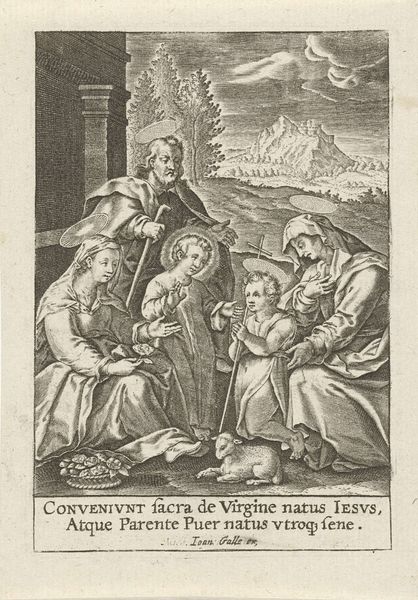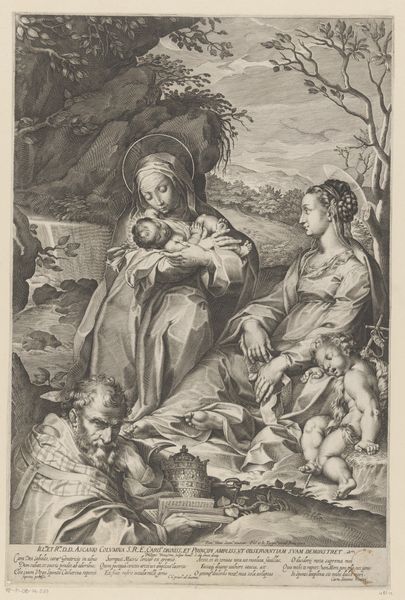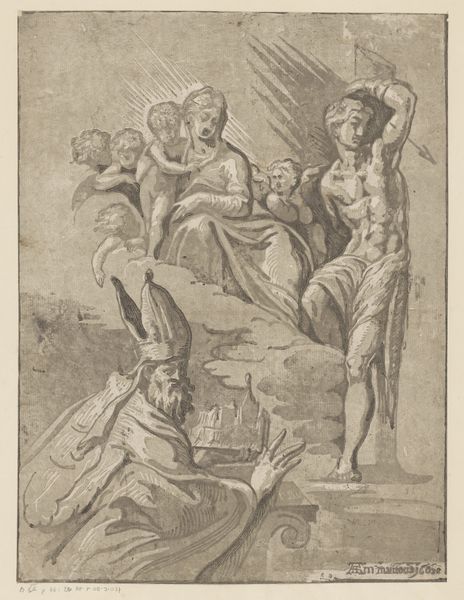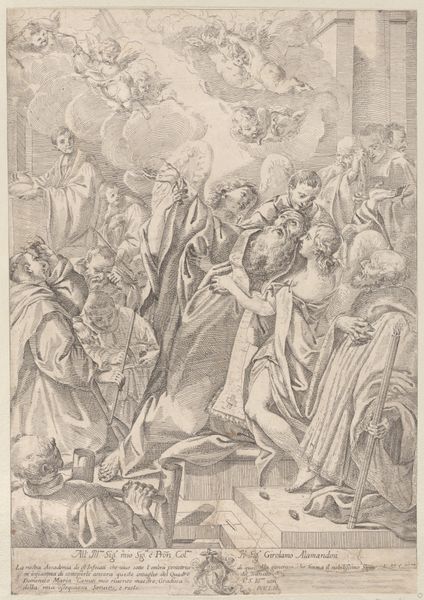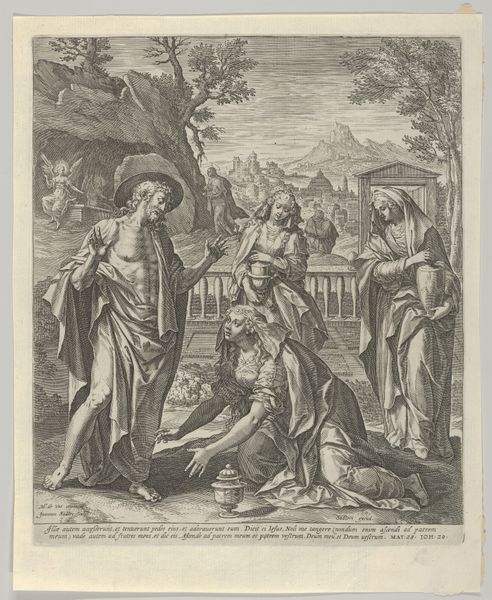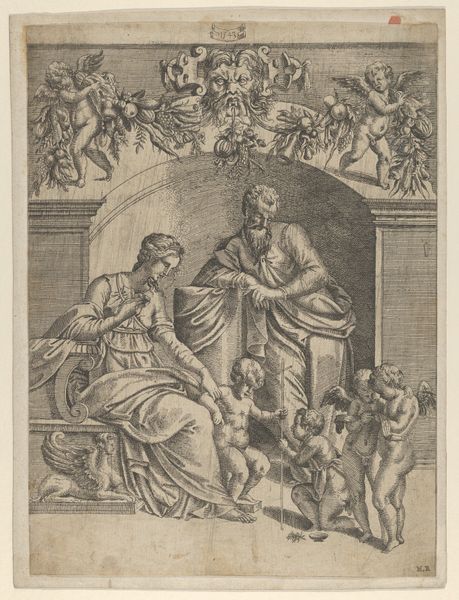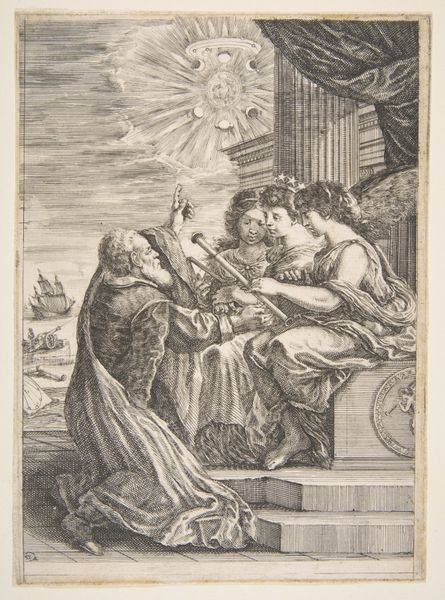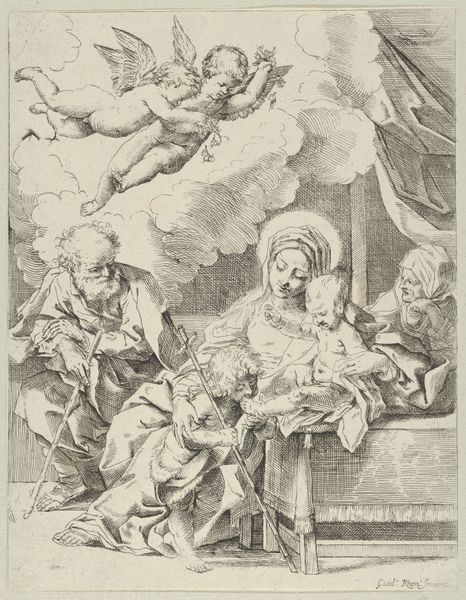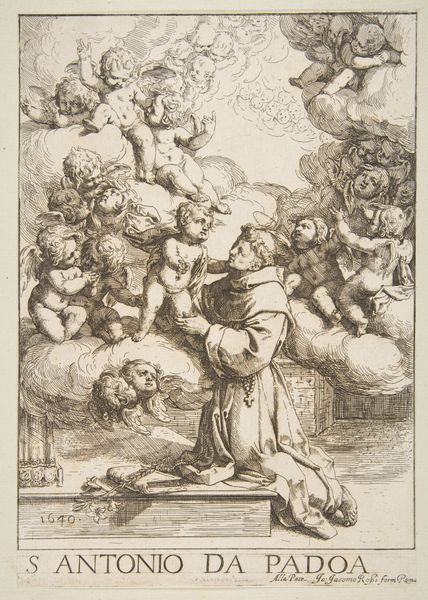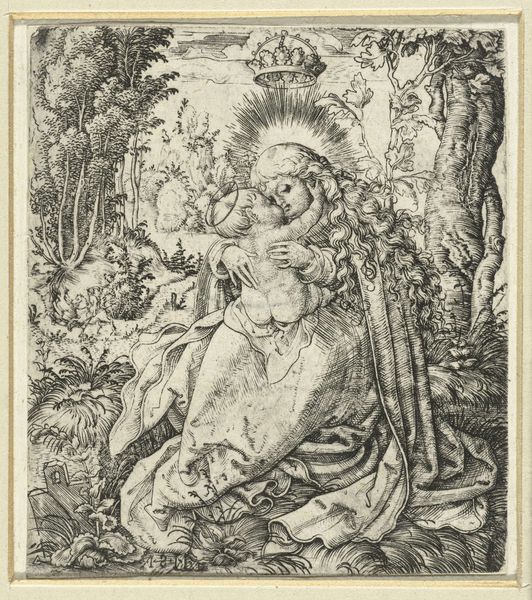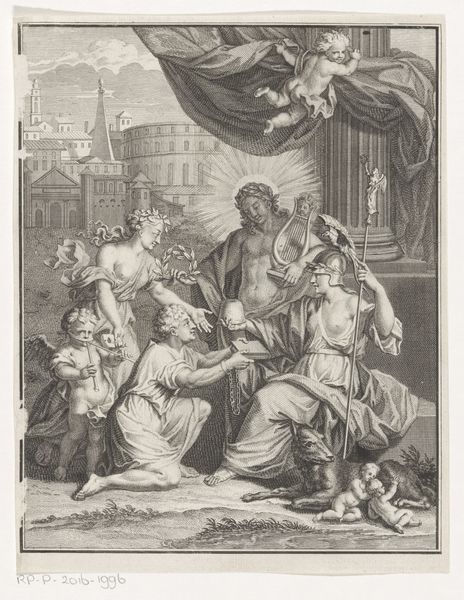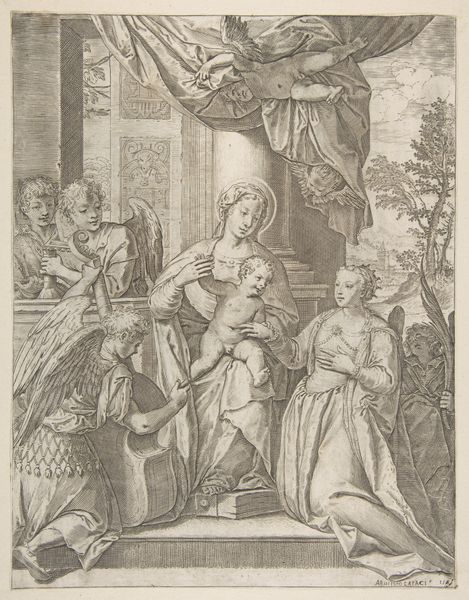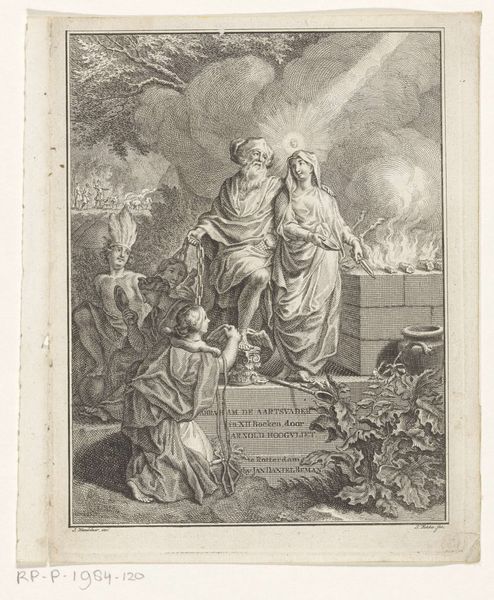
print, engraving
#
portrait
#
baroque
# print
#
old engraving style
#
figuration
#
italian-renaissance
#
engraving
Dimensions: height 264 mm, width 205 mm
Copyright: Rijks Museum: Open Domain
Giacomo Antonio Stefanoni created this print, Maria met Kind en Johannes de Doper, with etching. Prints like this one served a crucial public role in seventeenth-century Italy. Religious images offered moral instruction but they also exemplified the visual codes of Italian society, where social status and piety were closely linked. Notice how the artist invokes earlier styles such as the work of the Carracci family of Bologna whose work defined baroque classicism. By Stefanoni’s time, printmaking had become a commercial enterprise. Patrons, or ‘virtu amatore’ as the inscription says, played a key role in promoting art. So the print also documents the institutional history of art. Studying the image means understanding its multiple contexts. To fully appreciate this artwork, historians consult sources on the print market, the patronage system, and the history of religious imagery. Art lives in society, and these sources help us understand its meanings.
Comments
No comments
Be the first to comment and join the conversation on the ultimate creative platform.
